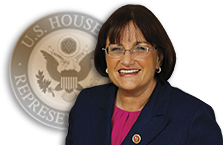Press Releases
Kuster, Gonzalez Introduce Bipartisan Legislation To Bolster Innovation, Groundbreaking Carbon-Capture Technology
Washington,
June 9, 2022
**Kuster introduced a previous version of this legislation in the 116th Congress**
Washington, D.C. — Today, Reps. Annie Kuster (D-NH) and Anthony Gonzalez (R-OH) introduced the REMOVE Act, legislation to enact a whole-of-government approach to experiment, prototype, and produce carbon dioxide removal (CDR) technology. The bill achieves this goal by directing federal agencies to include the development of CDR as part of their annual budget requests and ensure this work is coordinated across the federal government.
According to the National Academies of Sciences, Engineering, and Medicine (NAS), we cannot stop global temperatures from rising beyond 1.5 degrees Celsius, the maximum temperature increase we can reach before experiencing the worst impacts of climate change, with emissions reductions alone. We must also reduce the carbon dioxide (CO2) that is already in the atmosphere. CDR technologies remove CO2 from the atmosphere and store it permanently. Since CDR is in its infancy and our window of time to meet our climate goals is quickly closing, we need bold, new federal action to bring this technology online. That’s where Congresswoman Kuster’s REMOVE Act comes in.
“In order to prevent the worst effects of climate change, we must dramatically reduce the carbon in our atmosphere,” said Rep. Kuster. “Innovative carbon dioxide removal (CDR) technology has the potential to help us achieve this goal, but we must not take our foot off the pedal. I was proud to introduce this bipartisan legislation today to ensure our country and our government vigorously pursue CDR to curb climate change. I look forward to working with my colleagues to get this bill over the finish line and help preserve our planet for generations to come.”
“Carbon capture and removal technologies are important tools that remove harmful emissions while still ensuring the long-term use of our country’s traditional energy sources,” said Rep. Gonzalez. “The REMOVE Act will help us capitalize on our cutting edge research and development capabilities and ensure Americans' energy remains reliable and affordable.”
“Carbon dioxide removal technologies are critical to meeting our climate goals. The United States will need a whole-of-government approach to advance carbon dioxide removal and the REMOVE Act will help bring to bear the full resources of the federal government to support the development of these solutions. Congresswoman Kuster should be commended for her leadership and foresight for leading this critical climate change policy effort,” said Roger Ullman, Executive Director, LTC Action.
“As carbon removal policy goes, the REMOVE Act is the most comprehensive coordination effort we’ve seen to organize existing carbon removal programs, knowledge, and data across agencies. The creation of this interagency working group would support a portfolio approach to carbon removal, from nascent solutions such as enhanced mineralization to more commercial solutions such as forestry. Importantly, the REMOVE Act is underpinned by a clear emphasis on community-level research to understand how carbon removal projects shape and impact communities that host them,” said Erin Burns, Executive Director Carbon180.
“Addressing the climate crisis requires more than reducing emissions: we must also rapidly scale up carbon removal. The REMOVE Act puts in motion a transparent, all of government approach to large-scale carbon removal that will have a beneficial impact on our warming planet. Importantly, the legislation includes provisions on community engagement, socio-economic and community impacts, and outreach to distressed and unrepresented groups. The bill provides a foundation for a carbon removal policy that ensures environmental integrity, incorporates equity and the efficient use of public funds to deliver real results," said Angela Anderson, Director of Industrial Innovation and Carbon Removal, World Resources Institute.
Specifically, the REMOVE Act would:
Full text of this legislation can be found here.
### |
